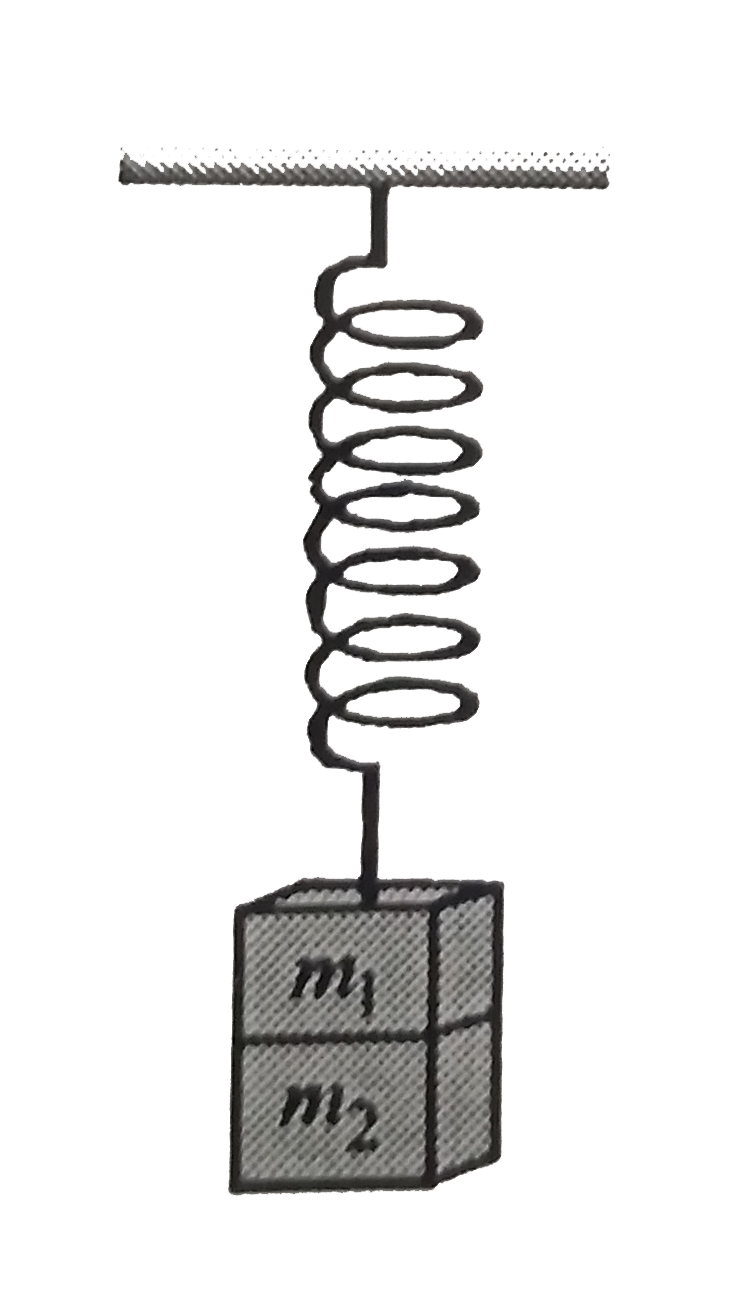What is the maximum value of force, so that both the blocks will move together ? m1=m2=2kg ,μ=1/3
 Solution in Gujrati
Solution in Gujrati
The correct Answer is:403N
Step by step video & image solution for What is the maximum value of force, so that both the blocks will move together ? m1=m2=2kg ,μ=1/3 by Physics experts to help you in doubts & scoring excellent marks in Class 12 exams.
Updated on:21/07/2023Topper's Solved these Questions
- RACEBOOK - ALLEN CHAPTER - RACEEXERCISE - Basic Maths (WORK POWER & ENERGY)
33 Videos
- RACEBOOK - ALLEN CHAPTER - RACEEXERCISE - Basic Maths (CIRCULAR MOTION)
16 Videos
- RACEBOOK - ALLEN CHAPTER - RACEEXERCISE - Basic Maths (NEWTONS LAWS OF MOTION)
49 Videos
- NEWTONS LAWS OF MOTIONBOOK - ALLEN CHAPTER - NEWTONS LAWS OF MOTIONEXERCISE - EXERCISE-III
28 Videos
- SIMPLE HARMONIC MOTIONBOOK - ALLEN CHAPTER - SIMPLE HARMONIC MOTIONEXERCISE - Example
1 Videos
Similar Questions
A block of mass 2 kg is plased on a smooth horizontal surface. Two forces F1=20 N and F2=5 N start acting on the block in opposite directions as shown. If block gets displaced by 5 m in the direction of net force then work done by F2 is :-

View SolutionA particle of mass m is moving in a horizontal circle of radius r, under a centripetal force equal to -(K/r2). Where K is constant. What is the total energy of the particle?
View SolutionThere are two bodies A & B of same mass body A is at rest while body B is under going uniform motion, which is correct statements ?
View SolutionAssertion: The driver in a vechicle moving with a constant speed on a straight road is in a non-inertial frame of referance.
Reason: A reference frame in which Newton's laws of motion are applicable is non-inertial.
View SolutionA rod with rectangular cross section oscillates about a horizontal axis passing through one of its ends and it behaves like a seconds pendulum, its length will be
View Solutionf(x)=|x-1|+|x-2|,g(x)=x+(1)/(x),x>0* if m 1=min(f(x)) and m2=min(g(x)) then (m2+m1)/(m2-m1) is equal to
View SolutionThere are two block as shown in the figure of masses 1kg and 4kg . Friction coefficient between any two surfaces are 0.2 then find maximum value of horizontal force F so that both blocks moves together.
View SolutionThe coefficient of friction between the blocks are mu_(s) = 0.3 and mu_(k) = 0.2 . (a) Find the maximum value of F so that the blocks move together. (b) If force F is twice the value found in (a) , find the acceleration of each block.
View SolutionTwo masses m1 and m2 are suspended together by a massless spring of constant k. When the masses are in equilibrium, m1 is removed without disturbing the system. The amplitude of oscillations is

View SolutionDiscuss different cases, to find final velocities for two bodies in the below expression for v_(1f)=((m1-m2)v1i)/(m1+m2) and v_(2f)=(2m1v1i)/(m1+m2)
View SolutionFind out the maximum value of F for which both the blocks will move together.
View SolutionFind out the range of force in which both the blocks move together.
View SolutionThe maximum value of F which can be applied on the system shown in figure so that both blocks move together with same acceleration is
View SolutionA block A of mass 4 kg is placed on another block B of mass 5 kg, and the block B rests on a smooth horizontal table. If the minimum force that can be applied on A so that both the blocks move together is 12N, the maximum force that can be applied on B for the blocks to move together will be:
View SolutionA block A of mass 4 kg is placed on another block B of mass 5 kg, and the block B rests on a smooth horizontal table. If the minimum force that can be applied on A so that both the blocks move together is 12N, the maximum force that can be applied on B for the blocks to move together will be:
View SolutionThere are two block as shown in the figure of masses 1kg and 4kg. Friction coefficient between any two surfaces are 0.2 then find maximum value of horizontal force F so that both blocks moves together.
_2019_CBT6_E01_036_Q01.png)
View Solution
